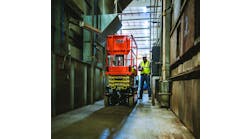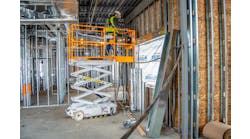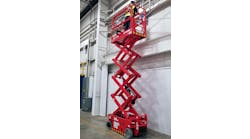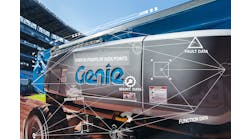RER: In a more competitive era, how have the service challenges changed?
Dinger: Customers are expecting a more proactive approach, and faster repairs from start to finish resulting in minimal downtime. The expectations regarding communication have changed as well, because we have so many ways to communicate with customers now (email, text, etc). Customers expect to receive more frequent communication regarding repair status.
Is there greater pressure to be on time when it comes to breakdowns on jobsites?
Absolutely, but this has always been the expectation of our customers, especially regarding production equipment.
Is your company more proactive about doing preventive maintenance on the jobsite than in the past?
Yes. Through remote monitoring/telematics, we know have access to the information we need to take a proactive approach to preventive maintenance. We no longer have to rely on customers to supply equipment hours and location, and can begin the scheduling process much sooner to find the most convenient time to schedule downtime.
How have telematics and remote diagnostic capabilities helped your company deal with jobsite service issues?
Telematics allow us to start the troubleshooting process before reaching the jobsite. This aids in completing repairs in a more timely fashion and increases uptime. It also allows us to spot potential operator issues that may lead to downtime, and curb those behaviors before they result in downtime.
What about electronic codes on machines that might enable your service technicians to know what the problem is before going out to the jobsite?
We can view electronic codes online the same way we previously viewed them once a technician arrived at a piece of equipment. Certain codes provide us with enough information to make an educated guess on what needs to be done and what parts may be needed, which results in faster repair times and a reduction in travel costs.
Is there greater pressure, in this more competitive era, to respond to breakdowns quicker than in the past?
As mentioned with today’s technology everything is expected to be done quicker than in the past. Our intention is to be fast but be prepared. The telematics gives us a better evaluation process prior to dispatch so that we can “bring the parts that we anticipate” that we need based on codes and alarms. This reduces the need for a follow-up trip and thus reduces again the downtime of the machine and the operator.
What are the expectations of your customers regarding how quickly you respond to breakdowns?
Our customers for the most part have realistic expectations. They expect minimally same day service when they call. They are also aware that we operate 24/7 so if the call comes in last in the day or during the hours that we are closed they know that we will be there to diagnose and repair to minimize their downtime.
Do you chart or measure your response times in order to continually improve in this era?
Our field dispatchers maintain an excel sheet when we dispatch our technicians. We also review this status every day for planning purposes. In addition the expectation is a communication with the customer with an update to the status of their call if we have to order parts and make a return trip or if the machine is completed.
How has the organization of your service department evolved in recent years?
We are constantly reviewing equipment data, such as fluid analysis, inspections, and electronic data to spot problems and present options to our customers to repair before failure. We distribute this information to our field staff so they can get in front of customers and address these issues, rather than waiting for the customers to contact us as we did in the past.





